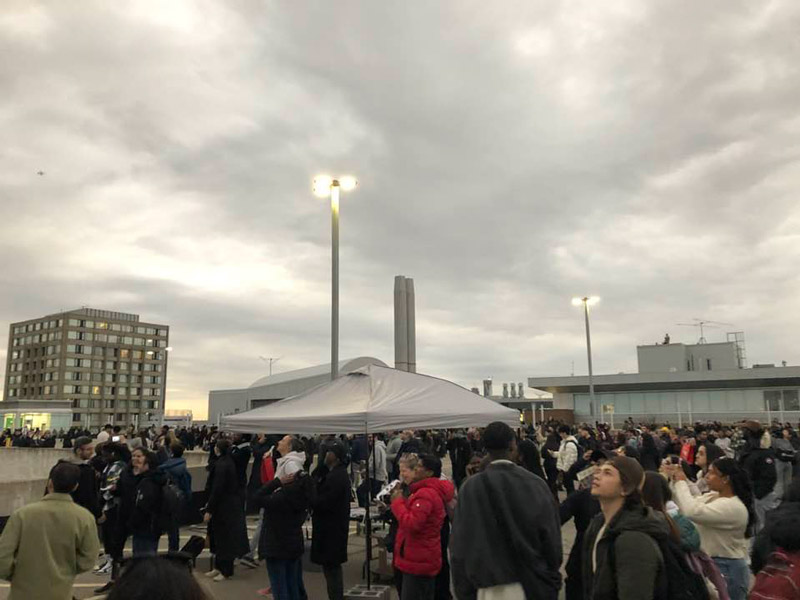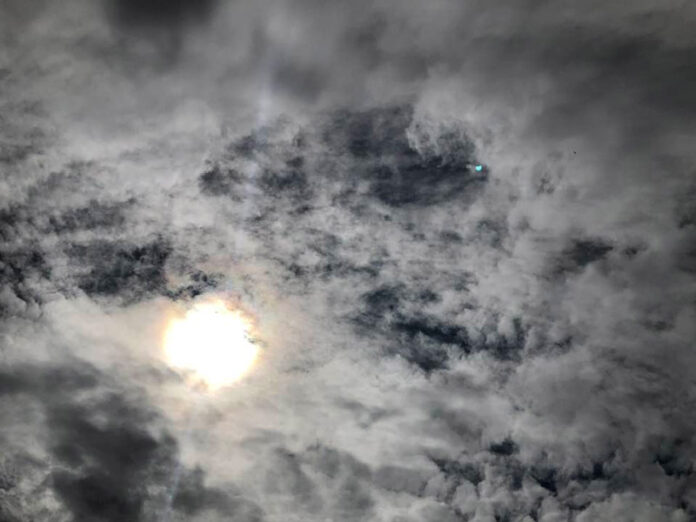Web Desk
Toronto: Toronto and many other cities and towns of Canada fell into midday darkness as millions of people flocked into public places to watch the total solar eclipse today.
In Toronto, which won’t see the next total solar eclipse until 2144, clouds obscured the sun during the period of the eclipse. But when the time for total solar eclipse (99.7 percent) came, it became pitch dark and very cold.
At Toronto’s York University where thousands of students converged on top of one of its science blocks to watch the once-in-a-lifetime phenomenon, lights went on during the short duration of total eclipse at 3.19 pm.

Canada’s top astronomer and York University former professor Paul Delaney, who was on hand to explain the significance of this solar eclipse, said, “From the point of view of science, when you are blocking the sun, you are changing the dynamics in the atmosphere and the atmosphere responds very differently during a total eclipse. Radiowave propagation is impacted. NASA is launching its sounding rockets into the upper atmosphere from Niagara Falls to monitor changes as radiation is depleted from the atmosphere.”
He said, “This total solar eclipse has given the opportunity to study the diameter of the sun which has come under great scrutiny of late because scientists think it is actually changing. This eclipse is an opportunity to measure the diameter. They are looking at the sun’s corona and coronasphere. It will tell us about magnetic fields around the sun. There is a lot of information that we will gain from this solar eclipse.”
Toronto had its last total solar eclipse in 1925. “It was a cloudy day in Toronto back in 1925. Toronto University scientists tried to measure the change in the intensity of light coming from the sun that day. That total solar eclipse came quickly after the 1919 total solar eclipse when British astronomer Arthur Eddington verified Einstein’s famous theory of relativity.”
Total solar eclipses occur every 18 months somewhere around the world, but North America’s next total solar eclipse won’t happen till August 23, 2044.








